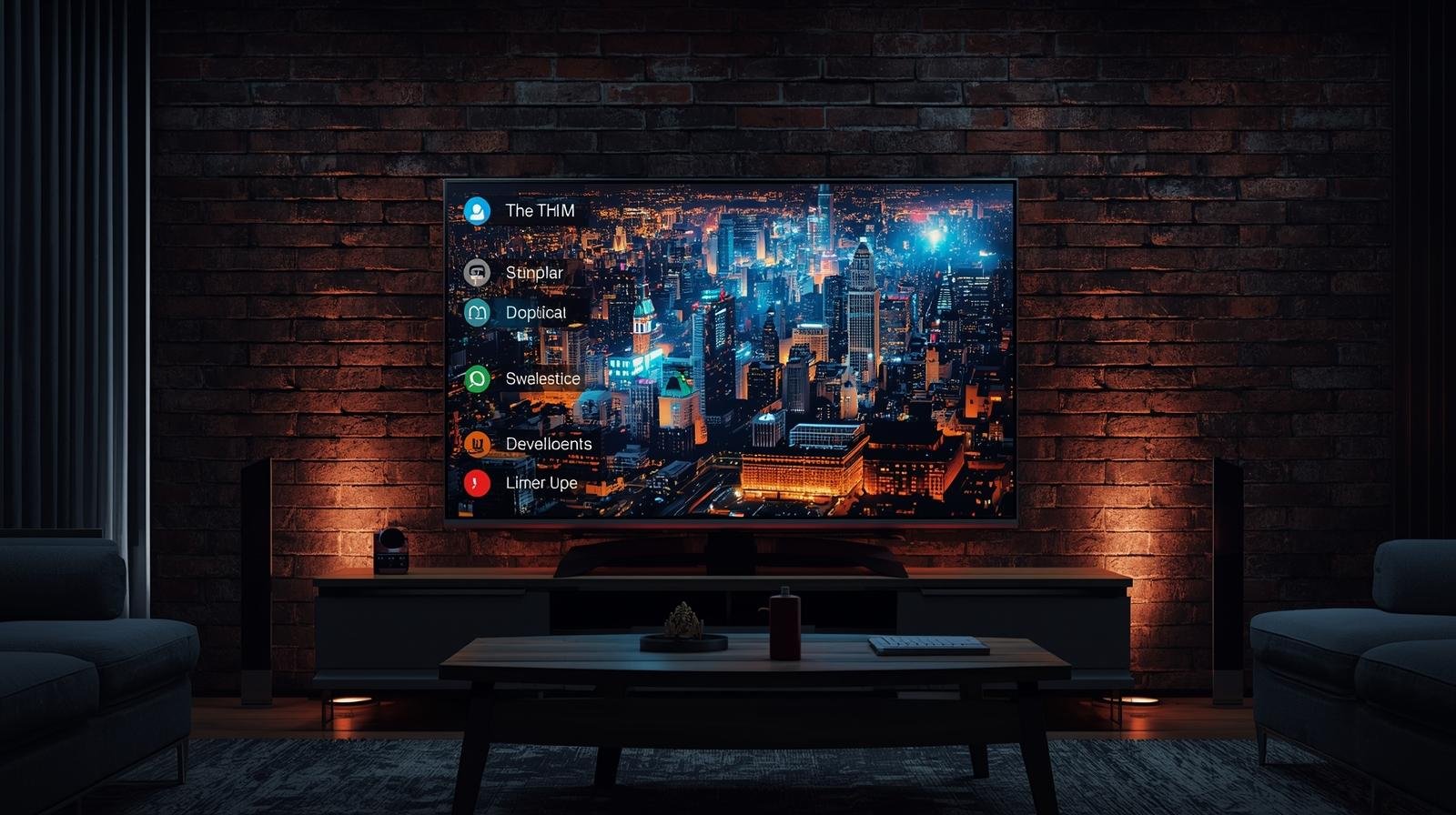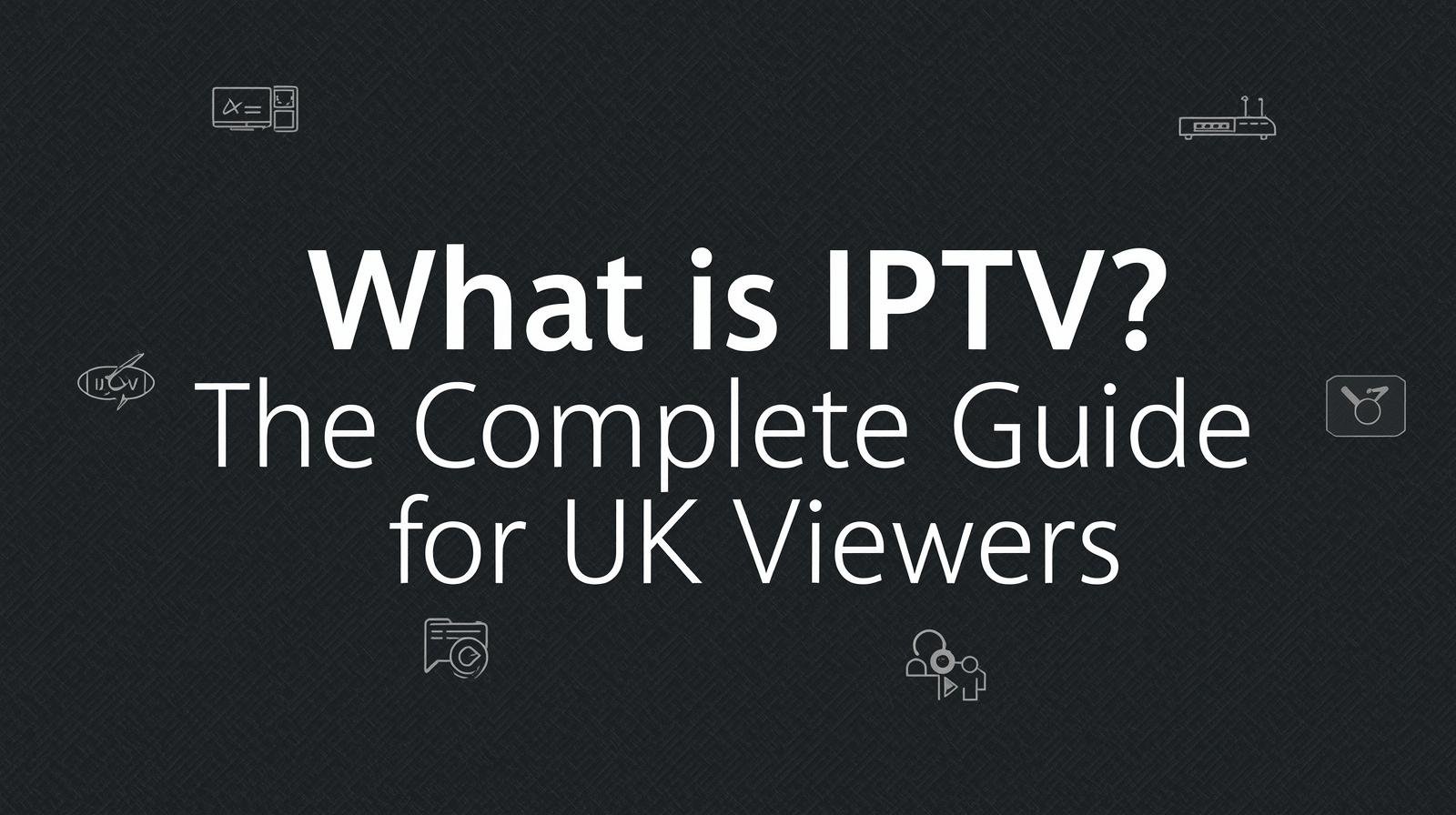Introduction
IPTV (Internet Protocol Television) keeps getting smarter, faster, and more tempting — offering huge channel line-ups, international content, and cheap alternatives to legacy pay-TV packages. But 2025 brings fresh legal attention, more aggressive anti-piracy enforcement, and new security risks (including malware masquerading as IPTV apps). Choosing the right IPTV provider in the UK now means balancing value, reliability, device support, and—critically—legal/safety considerations. This guide shows you exactly what to check, why it matters, and a practical buying checklist you can use right away.
1) Start with legality and safety — the non-negotiable step
Before anything else, ask: Is this service authorised to distribute the channels it offers? In the UK, streaming copyrighted live TV and premium sports requires rights. Unauthorized resellers or “resellers of resellers” are the common illegal models in IPTV piracy.
Why this matters:
-
Using an unauthorized service can expose you to sudden shutdowns, loss of subscription fees, data exposure, and (in extreme cases) legal notices — enforcement groups like FACT have actively pursued operators and service providers.
-
Illegal IPTV distributors often deliver compromised binaries or instruct you to sideload apps — a known vector for malware. In 2025 researchers discovered Android trojans posing as IPTV/VPN apps. Don’t risk your banking credentials or identity.
How to check:
-
Look for licensing statements on the provider’s site (which channels they’re licensed to show and in which regions).
-
Search for the provider’s corporate identity — companies with UK registration details (or a credible EU/UK license) and transparent contact/support channels are more trustworthy.
-
Avoid anonymous sellers on social media or marketplaces offering “all channels + sports” for tiny monthly fees — these are classic red flags.
-
Check enforcement reports (FACT, news articles) — if the provider name appears in takedown/crackdown stories, walk away.
(If you want, later in this guide I’ll show how to verify particular providers — but always do the legality check first.)
2) Decide what “best” means for you — content, devices, and quality
IPTV services vary dramatically in what they offer. Ask yourself:
-
Content priorities: live UK channels? Premier League/major sports? US channels? International/ethnic channels? VOD and catch-up?
-
Quality expectations: Do you need 4K streams and Dolby audio, or is 720p/1080p fine?
-
Device ecosystem: Do you use Fire TV Stick, Android TV, Smart TV (Samsung/LG), Apple TV, iPhone/iPad, or just a web browser?
-
Simultaneous streams: How many family members will watch at once?
-
Budget: Are you willing to pay official prices for trusted services, or are you looking for a very low-cost solution (which often correlates with higher risk)?
A good provider matches your content needs, gives usable apps for your devices, provides stable streams, and offers a trial or short-term plan so you can test it.
3) Technical checklist: performance, reliability, and infrastructure
Look for these technical features and claims — then verify them:
-
Uptime guarantees & status page: Providers who publish uptime stats or have a status page are more likely to manage their service professionally.
-
CDN and server redundancy: Good IPTV vendors use multiple Content Delivery Networks (CDNs) and server clusters to reduce buffering and blackouts during peak times.
-
Adaptive bitrate streaming: This allows quality to adjust to your connection, reducing buffering.
-
Supported streaming protocols & formats: HLS, DASH, MPEG-TS, and common codecs (H.264/H.265) — compatibility matters for older devices.
-
Low-latency or DVR features: If sports are important, check for low-latency options and whether they support pause/rewind (DVR).
-
Customer support & ticketing: Live chat, support ticket history, and active forums indicate a provider prepared to resolve issues quickly.
How to verify claims:
-
Run a free trial and test at different times (prime time and daytime). Test channel changes, stream startup time, and sustained bitrate.
-
Ask the support team for technical details (CDN locations, supported protocols); legit providers will answer.
4) Device compatibility & app quality
A provider may list device compatibility, but app quality often decides real-world usability.
Must-have device coverage:
-
Fire TV / Fire Stick (very popular in the UK)
-
Android TV / Nvidia Shield
-
iOS & Android mobile apps
-
Apple TV (tvOS) if you prefer Apple’s ecosystem
-
Smart TV apps (Samsung Tizen, LG webOS) — not all providers bother to build these
-
Smartphone casting / AirPlay / Chromecast support
-
Web player for desktop access
App quality checklist:
-
Regular updates in app stores (or frequent changelogs).
-
Clean UI, EPG (electronic programme guide) with channel grouping, and stable playback.
-
Avoid providers whose apps require complex sideloading steps or obscure installers — those are both a security and maintenance headache.
5) Pricing, trials, and refund policy
-
Free trial / money-back guarantee: Legitimate services commonly offer at least a short trial or a 24–48 hour refund window. Use it to test real-world performance.
-
Monthly vs yearly plans: Monthly plans give flexibility; yearly deals can save money but risk loss if the service folds.
-
Transparent pricing: Watch for “add-on” fees for HD/4K or additional connections. Legit providers list all charges clearly.
-
Payment methods: Credit card / PayPal / bank transfer are preferable to anonymous crypto-only payments — the latter can be a sign of dodgy operations.
6) Privacy & security — protect your account and data
Security features to expect:
-
HTTPS and authenticated accounts — passwords and payment data must be transmitted securely.
-
Two-factor authentication (2FA) for account logins, if available.
-
Clear privacy policy stating data handling practices.
Use a VPN cautiously and legally:
-
A VPN can help protect your privacy when using public Wi-Fi or prevent ISP throttling. But VPNs do not legalise access to content you’re not licensed to view, and using them to hide illegal streaming can still expose you to downstream enforcement. Choose a reputable VPN with strong privacy practices if you decide to use one. Reputable VPN reviews (2025) recommend established vendors for reliability and speed.
Security warnings:
-
Don’t sideload APKs from untrusted pages. Malware has been disguised as IPTV/VPN apps — only use official app stores or signed installers from reputable providers.
7) Content & channel verification — look beyond screenshots
Providers often use glossy screenshots and channel lists to attract sign-ups. Verify:
-
Random channel check: During a trial, sample channels from different categories (news, sports, kids, international) to ensure actual availability.
-
Regional rights: Some live sports / premium channels have territorial restrictions — a provider might show the channel name but not the live feed for your region.
-
VOD library authenticity: Check if on-demand content includes officially licensed catalogues or appears to be a patchwork of pirated uploads.
8) Support, community, and reputation
-
Active support — 24/7 chat or reasonable response times via ticketing are preferable.
-
Reputation on forums and review sites — take reviews with a grain of salt, but repeated reports of buffering, missing channels, or refund problems are red flags. Community hubs like specialist IPTV forums, Reddit threads, and independent review sites can be informative — look for corroborated patterns, not single complaints. (Remember: user reviews can be manipulated; weigh multiple sources.)
-
Transparency: providers that publish company info, server locations, terms and conditions, and acceptable use policies are generally more trustworthy.
For example, many comparison guides and roundups exist in 2025 listing top IPTV options—these can be a useful starting-place when combined with direct testing.
9) Red flags — walk away if you see these
-
Ultra-low prices for premium rights: If it sounds too good to be true (e.g., massive sports packages for £3–£5/month), it probably is.
-
No company details or anonymous owners.
-
Cryptocurrency-only payment, with zero recourse for refunds.
-
Apps not in official app stores and instructions to sideload APKs. (Malware risk is real.)
-
Lots of “reseller” language (reselling access to “main server” with multiple reseller panels) — this often hides an unlicensed back-end.
-
Repeated takedown or enforcement mentions in the news. If FACT or local police have targeted a service, best IPTV service UK it’s risky to subscribe.
10) Practical buying checklist — 10 steps to a safe choice
-
Legality check: Confirm licensing statements or company registration and search regulator/news sites for enforcement mentions.
-
Trial-first approach: Never buy a long subscription without a trial. Use the trial during peak evening hours to test performance.
-
Device test: Install on your main device(s) and test EPG, channel switching, and VOD playback.
-
Quality test: Check stream quality, best IPTV service UK startup time, and buffering over multiple days.
-
Support test: Submit a support ticket or live chat question and note response time/quality.
-
Payment safety: Prefer credit card/PayPal for buyer protection. Avoid crypto-only sellers.
-
Privacy practices: Read the privacy policy; consider enabling 2FA. If using a VPN, best IPTV service UK pick a reputable one.
-
Refund terms: Check refund windows and cancellation rules.
-
Community feedback: Search forums and independent reviews; prioritize providers with consistent positive feedback.
-
Exit strategy: If the service fails, document attempts to refund and cancel; keep screenshots of terms and communications.
11) Device-specific tips
-
Amazon Fire TV / Fire Stick: Many legitimate IPTV apps are available; sideloading is common but risky—prefer apps available in the Amazon store or from a reputable provider with signed APKs.
-
Smart TVs: If there’s no native app, web-based players and casting (Chromecast/AirPlay) can be good fallbacks.
-
Mobile devices: Use the app stores (Apple App Store or Google Play) when possible for malware protection.
-
Set-top boxes & Android boxes: Avoid “pre-loaded” boxes from unknown sellers; best IPTV service UK they often contain modified firmware and illegal apps.
12) Sports and big events — special considerations
Sports rights are split by territory and are expensive. Providers advertising live Premier League, NFL, or UFC at rock-bottom prices are frequently operating illegally. Using such services can mean abrupt loss of access mid-season and risk of enforcement action. Always prefer rights-holding broadcasters or well-known, licensed OTT services for major sports. Recent enforcement efforts have repeatedly targeted illegal sports streams and “dodgy” boxes.
13) Protecting yourself from malware & scams
-
Official sources only: Download apps from official stores; avoid APKs from random websites.
-
Use anti-malware: Keep Android/iOS and antivirus apps updated.
-
Check permissions: If an IPTV app requests unnecessary permissions (contacts, SMS, Accessibility), that’s suspicious.
-
Be skeptical about “customer reviews” on a provider’s own site — independent verification is more trustworthy. Tech outlets in 2025 have highlighted new malware campaigns that disguise themselves as IPTV or VPN apps, so treat all third-party installers with caution.
14) VPNs — pros, cons, and recommended use
Pros:
-
Helps protect privacy on open Wi-Fi.
-
Can reduce ISP throttling in some cases.
Cons:
-
Does not legalise illegal streams. Using a VPN to hide piracy is not a legal solution.
-
Adds latency and sometimes reduces streaming quality if the VPN server is overloaded.
If you use a VPN, choose a reputable, fast provider with streaming-friendly servers. Reviews and roundups in 2025 list several strong VPNs for streaming reliability and speed. Always read the VPN provider’s terms — some explicitly prohibit illegal streaming.
15) Where to start — recommended approach in 2025
-
Decide content and devices you need.
-
Shortlist 3 providers that appear licensed/transparent and offer trials. Use independent comparison sites to narrow choices — but rely on hands-on trials for the final call.
-
Run a 48–72 hour trial during peak hours; best IPTV service UK test multiple devices.
-
Monitor support responsiveness and check the refund policy if problems arise.
-
Keep evidence (screenshots of terms and advertising) until your first real month is over — helpful if disputes arise.
16) Common buyer mistakes (and how to avoid them)
-
Buying a year upfront before testing quality — use monthly plans first.
-
Assuming all IPTV equals “cable replacement” — channel line-ups differ; verify key channels.
-
Trusting anonymous social posts or “influencer” shoutouts without background checks.
-
Sideloading everything without thinking about security — that’s how users get malware.
17) Final words — balancing value, quality and safety in 2025
IPTV offers fantastic value and flexibility — when you pick a reputable provider. In 2025 the environment is a mixed bag: many legitimate, licensed OTT/IPTV offerings coexist with a persistent illegal market and increasing enforcement. Prioritize legality, security, and device compatibility before chasing the cheapest price. Use trials to test real-world performance, avoid sideloaded or anonymous apps, best IPTV service UK and treat VPNs as privacy tools — not legal shields.
If you want, I can:
-
produce a one-page checklist you can print before subscribing; or
-
evaluate a specific IPTV provider (if you give me a name) against the legality, technical, best IPTV service UK and security criteria above and summarize red flags and trust signals.
Sources & further reading (selected)
-
UK Government consultation on advertising restrictions for IPTV / Ofcom regulation background.
-
Federation Against Copyright Theft (FACT) enforcement and recent crackdowns on illegal IPTV operators.
-
TechRadar reporting on Android malware disguised as IPTV/VPN apps (2025).
-
2025 IPTV provider roundups and comparison guides (TROYPOINT, FirestickTricks). Helpful starting points to build a shortlist — test providers directly via trials.
-
VPN guides and recommendations for streaming (2025).


